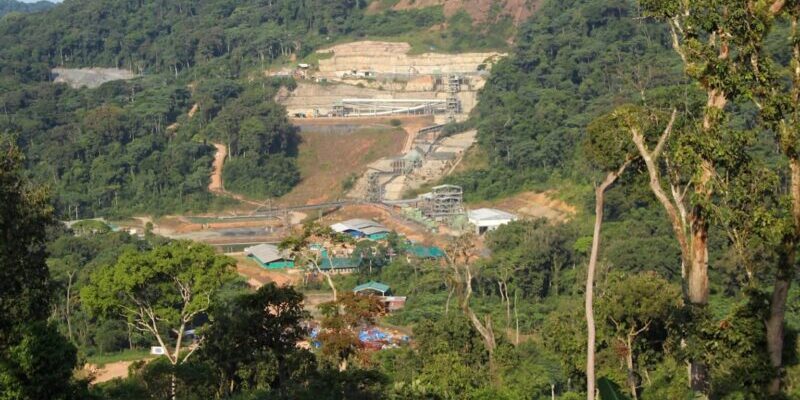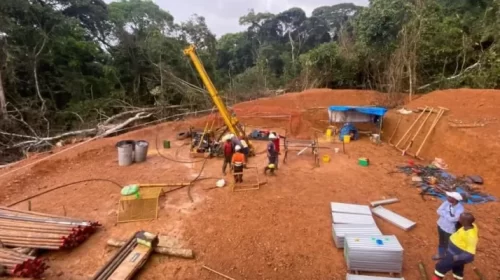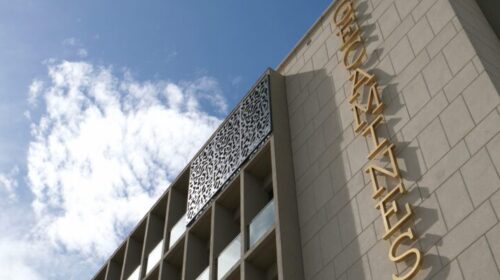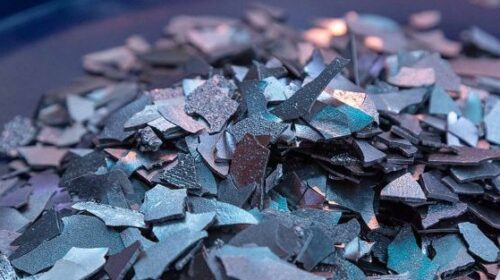Exploration could double Alphamin’s resources at Bisie
Geology is the one thing miners are not able to change. They cannot improve ore bodies or create valuable deposits. Geology does not follow mining companies. Miners must go out and look for the exceptional deposits wherever they are. If they are in the developing world, the risks, and the costs, to extract them are a lot higher compared to mining ore bodies in developed countries.
Nevertheless, if a company discovers a tin deposit with an average grade of more than 4.5%, there are no second thoughts. Despite the risks and challenges, Canadian listed Alphamin Resources (TSX.V:AFM) pursued the Bisie deposit in the DRC relentlessly until they started extracting the ore and mitigated the risks. Good rocks do not lie, and there seems to be a lot of them at Bisie. Most have not even been discovered yet. However, all indications are that Alphamin has identified an anomaly that could become the fifth tin province in the world.
Tin provinces of the world
According to Lehmann (1990) about 85% of all historically mined tin is sourced from four main tin ore provinces within large granite belts. These are, in decreasing importance, Southeast Asia (Indonesia, Malaysia, Thailand, Myanmar), South China, the Central Andes (Bolivia, southern Peru) and Cornwall, in southwest England. Current tin mine production is mainly from Indonesia (25 %), China (25 %), Myanmar (17 %), and Peru, Bolivia, Brazil (5-6 % each) (USGS, 2020).
The four existing tin provinces and their most important mines are:
- The South East Asian tin belt (Myanmar, Thailand, Malaysia, Indonesia) with a 40–45% share of the total world tin production. The top mining operations in this belt include PT Timah in Indonesia, which churned out 74 800t of tin (Sn) in 2020, Malaysian Smelting Corporation which produced 22 400t, while Thaisarco, in Thailand, unearthed close to 11 300t in 2020.
- The South China tin province (20%) hosts the current top refined tin producer in the world, Yunnan Tin, which processed 74 800t Sn in 2020, Yunnan Chengfeng, which produced 16 500t and was the 5th most prolific tin operation in the world in 2020. Guangxi China Tin and Jiangxi New Nanshan both produced 10 100t in 2020, while Gejiu Zi-Li produced 7000t.
- The Central Andean tin belt (Bolivia and southernmost Peru) (14%) where Minsur runs the San Raphael tin mine in the Puno region of Peru. In 2020 San Raphael produced 19 600t of tin.
- The Cornwall tin province (7%) in southwest England. Cornwall’s last mine, South Crofty, closed in 1998, after more than 400 years of continuous operations. In July 2016, Cornish Metals (LON, TSX-V: CUSN) completed the acquisition of the South Crofty and United Downs copper-tin projects. Cornish is getting closer to reopening the South Crofty tin-copper mine to put Cornwall back on the world tin map again in 2023.
Global tin mine production is currently about 300,000 tonnes of tin annually, with Indonesia and China dominating, and Myanmar on a par with these two countries for the last couple of years. More than 99% of this tin production is from ore deposits directly (primary deposits) or indirectly (placers) related to granitic rocks, i.e. granites and their volcanic and subvolcanic equivalents. A small quantity of tin is or was recovered as a by-product of mining of base-metal massive sulfide deposits (such as Kidd Creek in Canada, or Neves Corvo in Portugal). (Lehmann 1990).
Alphamin’s Bisie mine- a major development
Currently there are several discoveries and projects in development which will increase the proportion of tin mined from other parts of the world. These include Syrymbet in northern Kazakhstan and the Deputatskoe deposit in Yakutia, Northeast Russia, with more than 200,000t Sn content each. However, the most significant new development is in the North Kivu province of the DRC, where Alphamin Resources continue to mine cassiterite at a prolific grade of around 4% tin.
Not only that, but recent exploration results confirmed previous beliefs that the Bisie Ridge may soon be recognised as another tin province. Tin provinces are one of the best examples of metallogenic provinces. The Ridge at Bisie is close to 20km in length of which an extremely small area has been drilled up to now. But with Alphamin’s balance sheet under control and a phenomenal tin price backing it up, the company has invested in exploration drilling which started in December last year and is gaining momentum into 2021.
When Bisie was initially developed Alphamin only drilled out a deposit of five million tonnes. The Bisie mine was designed to be a “staged rollout”, where sufficient Resources were identified to support an initial operation with an adequate Life of Mine and acceptable returns. Once operating, further drilling would be carried out with internally generated cashflow. The result was that Alphamin discontinued the exploration programme with only 40,000m drilled. The lure of Bisie was the grade though, which measured an average of close to 4.5%. In some holes, the geologists measured up to 7% Sn, which was unheard of. In the global context, that put Bisie at another level.
At that stage, the highest-grade tin mine in the world was believed to be San Raphael in Peru, which mined tin at close to 2%. Since then, the average tin grade at San Raphael has dropped to well below 1.8%. The exciting fact about Bisie is that what they found, and subsequently drilled, was only the tip of an iceberg. It is a single deposit (Mpama North) located on a mineralised ridge of between 13km to 20km long. About 750m from Mpama North lies Mpama South and further along the ridge there are a number of prospective targets that can only be described as a string of pearls. These targets all fall within Alphamin’s tenement at Bisie.
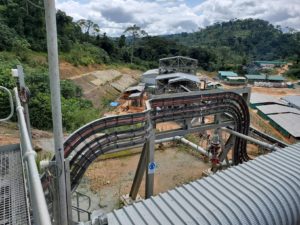
The Bisie Ridge is a hill that runs from north to south and falls almost entirely within Alphamin’s licensed areas. Mpama North fits the genetic model for tin deposits globally and like 99% of all tin in the world occurs in granite associated lithologies. What makes Bisie unique, however, is that the deposit has remained intact for millions of years, in contrast to similar deposits in the world where erosion played a much greater role a lot earlier. These deposits usually occur on intercontinental margins, whereas Bisie lies in an inter-cratonic zone and was subjected to intense and repeated compression and extension.
The Bisie Ridge thus represents the contact between a granite/basement and metasediments. Mineralisation occurs where northeast trending structures cross-cut this contact, evident at both the Mpama North and Mpama South deposits. This configuration is also evident at several other localities along this 13km ridge contact. Bisie is a strange anomaly in that it is a large, underexplored, extremely old, and very high-grade deposit.
Alphamin could more than double its resource and possibly production at Bisie
Alphamin decided to undertake a drilling programme last year with three goals in mind: To extend Mpama North (currently the highest- grade ore body in the world), to declare a maiden mineral resource at Mpama South (probably the second highest ore body in the world), and to identify and start drilling out new targets on the Bisie Ridge. If successful, it could more than double Alphamin’s resource at Bisie.
Exploration activities at Mpama South got underway last year, with a first phase 5,800m diamond drilling programme which started in December 2020. A second phase 4,200m programme started in April 2021. To date, 8,700m and 40 holes have been completed. Phase 3 for 6,800 metres commenced in May 2021 and will conclude in July/August 2021. All phases are intended to form the basis of a Mineral Resource estimation exercise on at least 16,000m, to be completed by end 2021. Infill drilling and further step-out drilling will continue for the remainder of 2021.
According to a recent announcement by Alphamin all holes completed to date have shown visual mineralisation, confirming the presence of the Main Zone of mineralisation over 500m of strike, while several exceptional intercepts comparable to the thick veins and brecciated zones of cassiterite existing at Mpama North were also observed. In addition, a new zone of mineralisation was discovered in the footwall which appears continuous and highly mineralised (Footwall Zone).
Examples of some of the drill results include:
- BGH030: 10.6 metres @ 4.85% Sn from 141.9 metres (see Figure 1)
- BGH032: 20.0 metres @ 2.07% Sn from 185.0 metres
- BGH025: 14.6 metres @ 2.70% Sn from 220.10 metres
The discovery of the parallel Footwall Zone of mineralisation about 25m from the Main Zone, has contributed towards the expansion of the Mpama South Drilling Programme scope and planned drill meters in 2021. The characteristic intense chlorite alteration associated with the high cassiterite mineralisation at the Mpama North operation is also present in the drill cores of Mpama South. This, of course, is good news for management’s objective to declare another high-grade tin Mineral Resource by the end of 2021. All the signs are there to believe that another high grade payshoot exists at Mpama South, similar to that at Mpama North.
In addition, further south along the ridge, more potential deposits have been identified, and Alphamin will prioritise two of them for exploration in 2021. Drill-testing supplemented by a geochemical soil sampling campaign, will be carried out at the ‘Marouge Target’ and the ‘V Target’, the characteristics of which, according to Alphamin, strongly match those at Mpama North and Mpama South.
![]()


